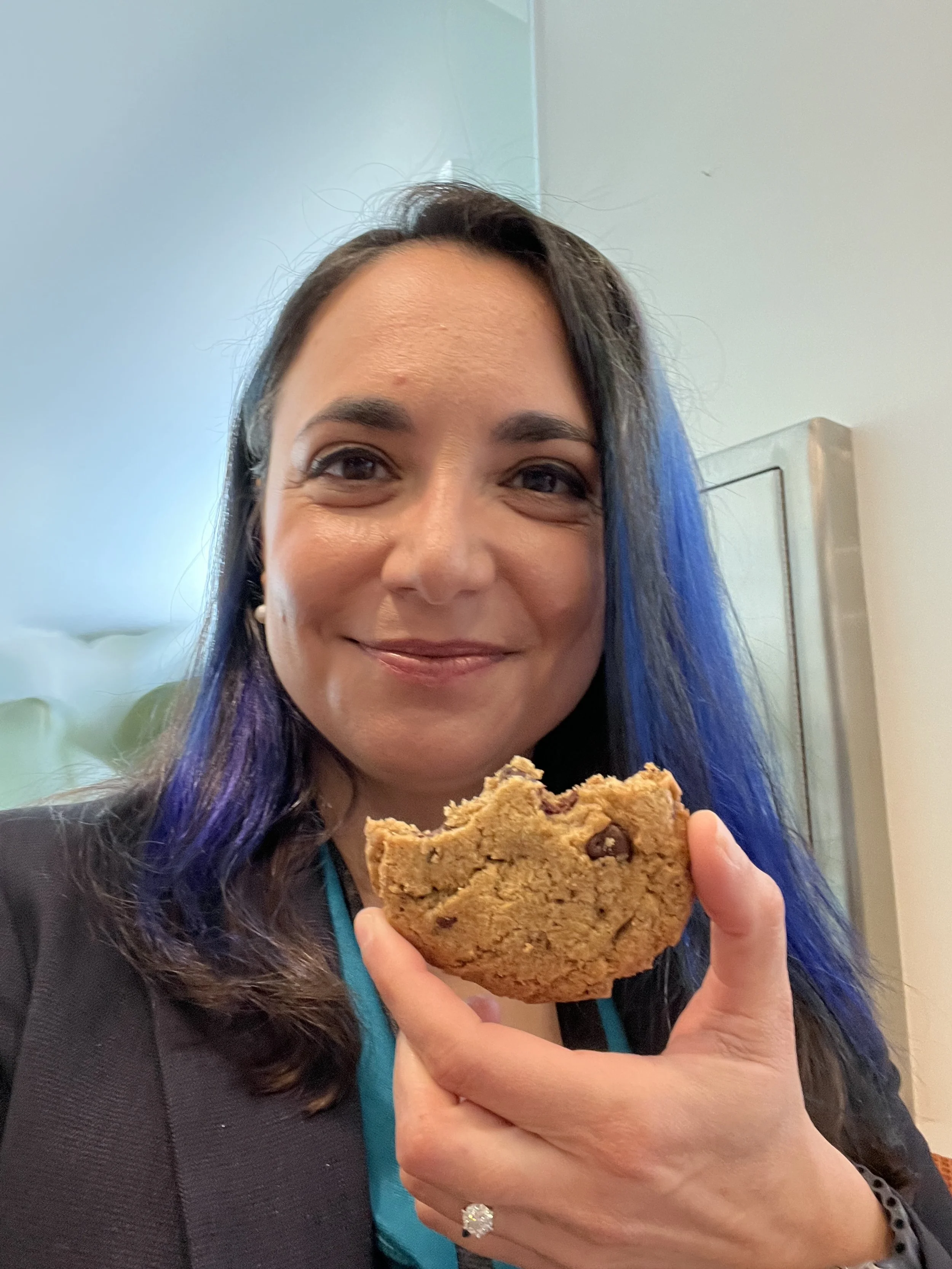Taste Testing the Future of Food with Two Innovative Ingredients
Dr. Tiffany Vora taste testing a cookie made of cricket flour and cultured oil.
Future visioning is a key skill for changemakers who want to build the future. When I help people build this skill, I often ask them to join me in exploring my preferred future(s).* That means that those future(s) need to be two things: imaginable and desirable.
Which brings me to cookies. Yes, cookies!
In the lead up to a recent speaking engagement at EY’s Disruptive Tech University, I was delighted to learn that two “future of food” products would be showcased there: Chirps’ cricket flour and Zero Acre Farms’ cultured oil.
I’ve had cricket chips before. Taste wise, they’re basically indistinguishable from any other chip that’s made from corn or wheat flour. Crickets are a great source of protein that are both potentially more sustainable than other types of protein and draw on a long tradition of eating insects around the world.
But cultured oil is a bit different. It’s produced via fermentation. In this approach, microorganisms transform sugars into oil—kind of like how we’ve made beer and yogurt for thousands of years. Precision fermentation approaches are a major part of today’s efforts to reduce the deforestation and water, energy, and carbon footprints of food production. There are some nuances here, but overall the picture is pretty promising.
💡 Nonetheless, when it comes to the future of food, the penultimate question is always the same. How does it taste? Which leads to the ultimate question. Will people buy it?
When it was tasting time, I was ready for a full-on horizontal taste test of cultured oil versus traditional oil. How would the future stack up? I pictured little paper cups. Maybe some breadsticks, like in those fancy olive oil tastings up in California’s wine country.
Instead, I found four plates. Two had homemade brownies and cookies made of traditional ingredients. And two had homemade brownies and cookies made with crickets and cultured oil.
They tasted the same. I checked. Thoroughly. Because I’m a scientist, of course.
At first, I was a bit disappointed by this setup. Where was the drama? The drag-down competition between the present and the future?
💡 After my sugar rush subsided, I recognized something important. These cookies and brownies constituted a bridge to the future. They were imaginable and desirable—just like the futures that I invite people to envision.
Sure, I wanted more drama as I tasted the future.
But just like everyone else, I really wanted a cookie.
This experience was an important lesson in practical futurism. As a business leader who’s fascinated by the future, at some point it will be your task to invite others into your vision. And when you do, here’s my advice:
Sell that cookie!
*I call these preferred futures “Tiffany’s magic fantasy land.” It’s a pretty awesome place, and you’re always welcome there!
About Tiffany
Dr. Tiffany Vora speaks, writes, and advises on how to harness technology to build the best possible future(s). She is an expert in biotech, health, & innovation.
For a full list of topics and ways to collaborate, visit Tiffany’s Work Together webpage.
Donate = Impact
After a 19-day voyage to Antarctica aboard The Island Sky in November 2023, Tiffany has many remarkable stories to share & a wealth of insights to catalyze a sustainable future.
You can support her ongoing journey by making a contribution through her donation page. Your support will spread positive impact around the world, empower Tiffany to protect time for impact-focused projects, and support logistical costs for pro bono events with students & nonprofits.




